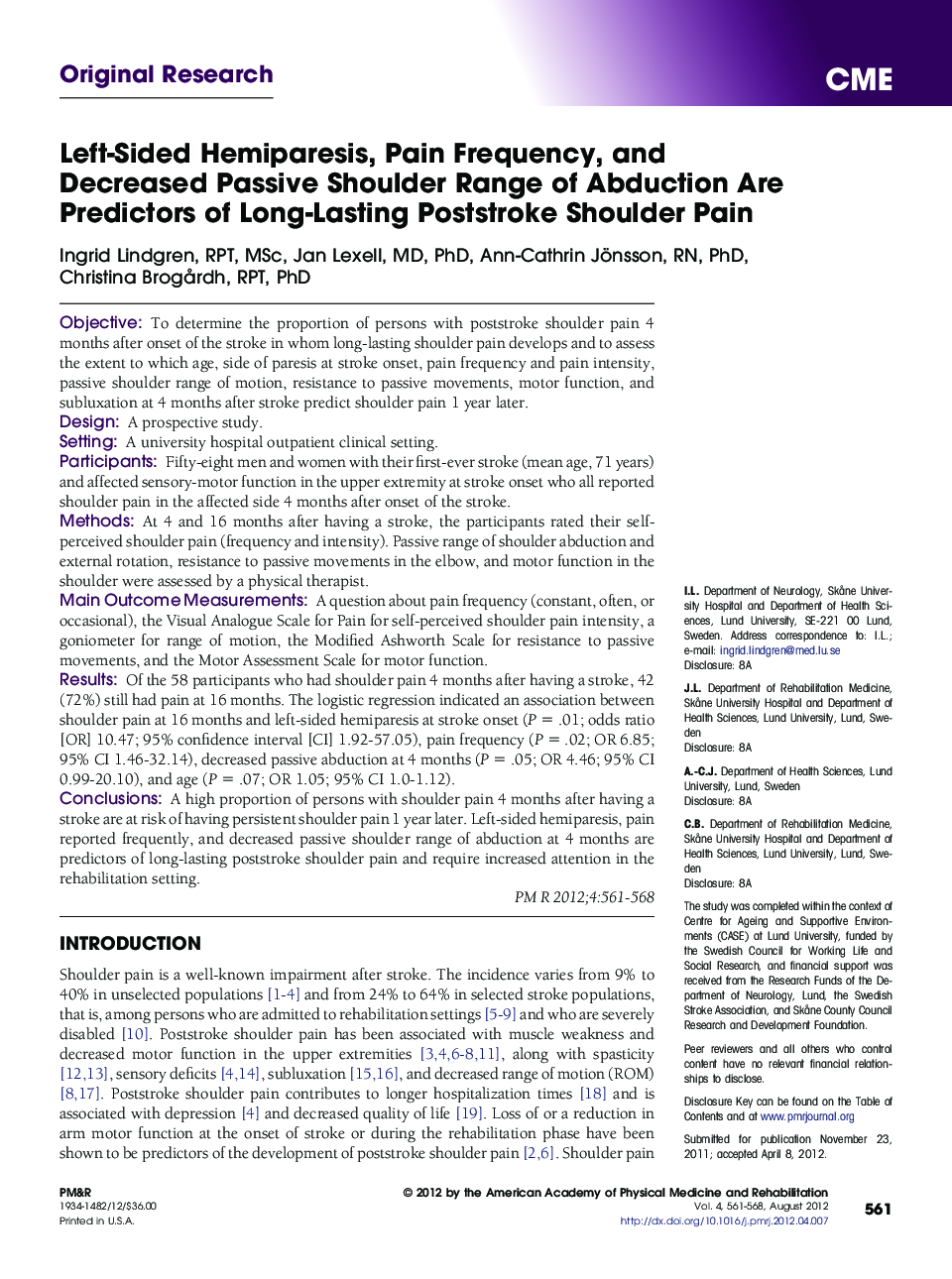| Article ID | Journal | Published Year | Pages | File Type |
|---|---|---|---|---|
| 2705911 | PM&R | 2012 | 8 Pages |
ObjectiveTo determine the proportion of persons with poststroke shoulder pain 4 months after onset of the stroke in whom long-lasting shoulder pain develops and to assess the extent to which age, side of paresis at stroke onset, pain frequency and pain intensity, passive shoulder range of motion, resistance to passive movements, motor function, and subluxation at 4 months after stroke predict shoulder pain 1 year later.DesignA prospective study.SettingA university hospital outpatient clinical setting.ParticipantsFifty-eight men and women with their first-ever stroke (mean age, 71 years) and affected sensory-motor function in the upper extremity at stroke onset who all reported shoulder pain in the affected side 4 months after onset of the stroke.MethodsAt 4 and 16 months after having a stroke, the participants rated their self-perceived shoulder pain (frequency and intensity). Passive range of shoulder abduction and external rotation, resistance to passive movements in the elbow, and motor function in the shoulder were assessed by a physical therapist.Main Outcome MeasurementsA question about pain frequency (constant, often, or occasional), the Visual Analogue Scale for Pain for self-perceived shoulder pain intensity, a goniometer for range of motion, the Modified Ashworth Scale for resistance to passive movements, and the Motor Assessment Scale for motor function.ResultsOf the 58 participants who had shoulder pain 4 months after having a stroke, 42 (72%) still had pain at 16 months. The logistic regression indicated an association between shoulder pain at 16 months and left-sided hemiparesis at stroke onset (P = .01; odds ratio [OR] 10.47; 95% confidence interval [CI] 1.92-57.05), pain frequency (P = .02; OR 6.85; 95% CI 1.46-32.14), decreased passive abduction at 4 months (P = .05; OR 4.46; 95% CI 0.99-20.10), and age (P = .07; OR 1.05; 95% CI 1.0-1.12).ConclusionsA high proportion of persons with shoulder pain 4 months after having a stroke are at risk of having persistent shoulder pain 1 year later. Left-sided hemiparesis, pain reported frequently, and decreased passive shoulder range of abduction at 4 months are predictors of long-lasting poststroke shoulder pain and require increased attention in the rehabilitation setting.
